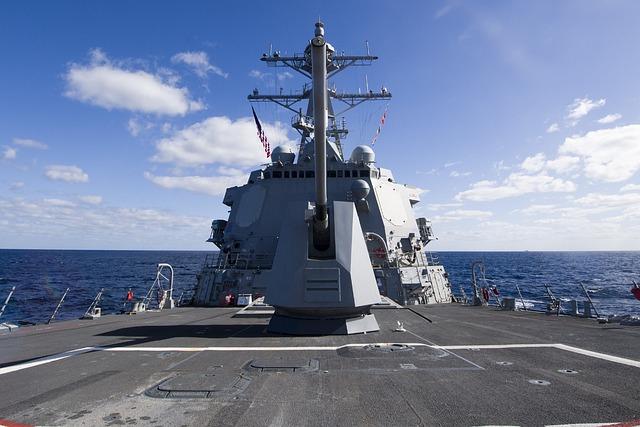Reviving America’s maritime might
In his electrifying joint address to Congress on March 4, 2025, President Donald Trump unfurled a vision as audacious as it is essential: to resurrect American shipbuilding, a once-proud industry now languishing in the shadow of foreign giants. With the creation of a White House Office of Shipbuilding and a pledge of tax incentives to bring this craft “home to America, where it belongs,” Trump ignited a clarion call to restore our nation’s industrial sinews. This is not mere nostalgia for a bygone era of Liberty Ships and bustling yards—it’s a conservative blueprint for national sovereignty, economic vigor, and a defiant stand against China’s maritime hegemony. For those of us who cherish limited government paired with purposeful action, this initiative is a masterstroke worth championing.
The stakes could not be higher. America’s shipbuilding capacity has withered to a skeletal frame—20 major yards where hundreds once thrived, a commercial sector holding a paltry 0.13% of the global market, and a Navy fleet of 295 vessels dwarfed by China’s 370 and counting. The Office of Naval Intelligence’s 2023 revelation that Beijing’s shipyards churn out 232 times more tonnage than ours is a gut punch to national pride and security. This isn’t just about ships; it’s about the arteries of trade, the muscle of defense, and the soul of a nation that once ruled the seas. Trump’s pledge to act “very fast, very soon” is no hollow boast—it’s a recognition that diverts disaster.
Conservatives rightly recoil at government overreach, but here lies a rare case where strategic intervention aligns with our core tenets. Shipbuilding’s decline stems not from market purity but from decades of neglect—subsidies axed in the 1980s, skilled workers lost to apathy, and yards left to rust while China’s state-backed behemoth gorged on $20 billion annually. Trump’s plan isn’t more bloated bureaucracy; it’s a lean, targeted strike—tax incentives to unleash private enterprise, a White House office to cut red tape, and a tariff shield to level a playing field warped by foreign mercantilism. This is Adam Smith with an American twist: government as a catalyst, not a crutch, empowering free markets to reclaim what globalists seized.
Picture revived communities—Mobile, Alabama; Pascagoula, Mississippi; Bath, Maine—where welders and engineers reclaim the dignity of work. Tie this to Trump’s Alaska gas pipeline, luring Japanese and South Korean contracts, and you’ve got a commercial shipbuilding renaissance—LNG carriers rolling off American lines, not Chinese ones. This isn’t welfare; it’s wealth creation, rooted in the conservative creed that prosperity flows from production, not handouts.
National security seals the argument. A Navy hobbled by backlogs—Virginia-class submarines years late, Constellation-class frigates stalled—cannot deter a China that builds warships at an eye-watering pace. Trump’s pick, John Phelan, as Navy Secretary, gets it: “rusty warships” aren’t just a personal peeve but a strategic liability. A White House office unifying the Pentagon’s fragmented efforts (think Deloitte’s $2.4 billion submarine deal and BlueForge’s $980.7 million industrial boost) could slash delays, aiming for 12 ships a year by decade’s end. Add a commercial fleet to choke China’s grip on 59% of global shipping, and you’ve got a double-barreled riposte to Xi Jinping’s maritime empire. Sovereignty demands strength, and strength demands ships.
Critics—some on the right—will balk. Tariffs, set to hit April 2, could spike steel costs, they warn, negating tax breaks. Fair point: shipbuilders import 30% of their materials, and a 25% duty might sting. But here’s where Trump’s genius shines: calibrate those tariffs—exempt steel bound for U.S. yards, target Chinese goods that undercut our producers—and you’ve got protectionism with precision. Others decry the workforce gap—200,000 welders short, an aging trade. Yet conservatives have the answer: a “Shipbuilding Corps,” a voluntary, industry-led push through trade schools and unions, training 50,000 patriots by 2028. No mandates, just opportunity—a GI Bill for the industrial age.
Skeptics might also cry “boondoggle,” pointing to the Government Accountability Office’s jab at the Navy’s lack of strategy. True, execution’s the rub. But Trump’s track record—love it or loathe it—shows a knack for bulldozing inertia. His new office isn’t another layer of fat; it’s a battering ram to align DOD, MARAD, and private yards under one banner. Pair this with the bipartisan SHIPS Act’s $15 billion trust fund, and you’ve got a fiscal lifeline free of annual budget brawls. This isn’t blind faith—it’s faith in a system jolted awake.
The conservative lens sharpens the vision further with an original twist: make shipbuilding a proving ground for deregulation. Slash EPA rules that choke yard expansions—emissions caps that sound noble but kneecap progress. Offer “freedom zones” around key ports, where tax and labor laws flex to lure investment. Imagine a Bath Iron Works unyoked, doubling output by 2030, or a Bollinger Shipyards reborn as a small-yard titan. This isn’t cronyism; it’s competition unleashed, a laboratory for Reagan’s “get out of the way” gospel. Let China drown in its central planning—America thrives when ingenuity breathes free.
Balance demands candor: risks loom. Tariffs misfired could price U.S. ships out of global markets—$60 million here versus China’s $20 million. Workforce training lags without ruthless focus; a single lost year cedes ground. And yes, $100 billion over 15 years to match 1980’s glory isn’t chump change. But conservatives don’t flinch at hard choices—short-term pain for long-term gain is our stock-in-trade. Trump’s “little disturbance” from tariffs is a wager worth taking if it births a fleet to secure our shores and trade.
This isn’t just about ships—it’s about who we are. A nation that builds asserts its destiny; one that doesn’t decays. Trump’s vow echoes the Arsenal of Democracy, when yards churned out 5,777 vessels to crush tyranny. Today’s tyranny is subtler—economic strangulation, strategic encirclement—but no less real. By 2035, we could see 350 Navy ships, 100 commercial hulls, and a heartland humming with purpose. Fail, and China’s 600-ship armada rules the waves, our allies drifting to Seoul or Beijing.
Patriotic readers know the score: liberty isn’t cheap, nor is greatness. Trump’s shipbuilding gambit is conservatism at its boldest—government as a spark, not a smotherer; sovereignty as a shield, not a slogan. It’s a fight for the soul of a nation that once sailed the world unbowed. Let’s back it, refine it, and build it right. The seas—and history—await.

Image: Free image, Pixabay license.





